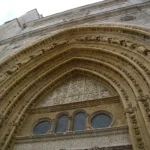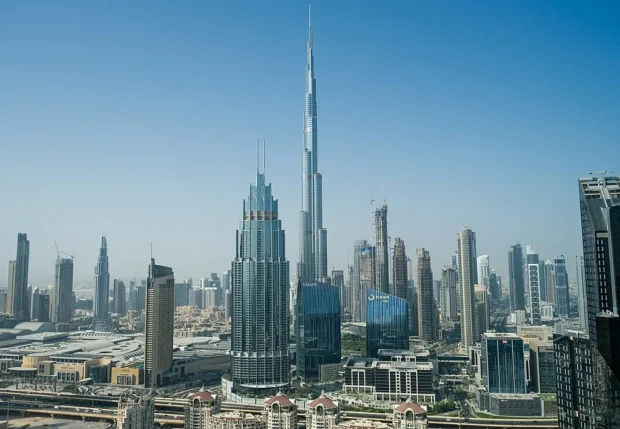Dubai’s Burj Khalifa pierces the skyline with unmatched elegance, beckoning visitors to admire its grandeur. Standing as the tallest man-made structure on Earth, this architectural marvel captures the imagination of anyone curious about modern engineering and design within the United Arab Emirates. For those drawn to unique buildings, breathtaking views, and a sense of human achievement, Burj Khalifa promises a memorable encounter. This journey will guide you through the experience, history, directions, visitor insights, and tips to fully appreciate this tall wonder.
Table of Contents
Approaching Dubai’s Sky-High Masterpiece
The Burj Khalifa ascends from Downtown Dubai, an urban heart pulsating with luxury amenities, fountains, and emerald parks. Visitors can reach it by various means, all designed for convenience amidst the city’s fast-paced charm.
For a broader view of Dubai’s rich contrasts and landmarks, explore the unmissable sights and stories waiting in Dubai that deepen the city’s unique character.
Getting There from Key Locations
Travelers arriving at Dubai International Airport enjoy direct access to the city center via taxi or metro. The Red Line of the Dubai Metro connects the airport terminals to the Burj Khalifa/Dubai Mall station, just a short walk from the tower itself. For those staying in the city center, the metro offers a stress-free path, while taxis provide a more flexible, direct approach. Additionally, bus routes and ride-sharing services seamlessly link the area to other city parts.
Nearby Lodging and Dining Delights
While the Burj Khalifa neighborhood thrives with high-end hotels, many visitors choose nearby accommodations ranging from boutique lodgings to apartments. This offers easy access while enjoying quieter evenings away from tourist crowds. The area bursts with dining options – savor authentic Emirati flavors at local cafes or indulge in international cuisine within walking distance. For a delightful break, try traditional dishes such as machboos or fresh shawarma from nearby eateries.
Unfolding the Tower’s Story and Symbolism
The Burj Khalifa is more than an architectural achievement; it represents Dubai’s vision of modernity and ambition. Conceived in the early 2000s, construction began in 2004, culminating in its grand opening in 2010. The tower’s design draws inspiration from Islamic architecture and desert hymns, particularly the Hymenocallis flower’s geometric structure, reflecting symmetry and harmony.
Ibrahim Al Otaiba, a project engineer, once remarked how the building’s stepped pattern not only serves aesthetics but also stabilizes wind flow – an invisible hand sculpting its form. Structurally, the tower ascends in three segments, forming a Y-shape that maximizes light and views for residents and office occupants.
Its 828 meters surpass all predecessors, a testament to human creativity overcoming natural limits. The Burj Khalifa signals Dubai’s transition from a desert settlement to a beacon of global commerce and culture, inviting visitors to witness history sculpted in steel and glass.
Plan Your Visit: Tours and Reservation Essentials
Accessing the Burj Khalifa’s observation decks offers a spectacular panorama, especially at the “At The Top” levels on the 124th, 125th, and 148th floors. Due to its popularity, it is wise to pre-book tickets either online or through authorized agents. Early morning or late evening slots provide fewer crowds and magical light, perfect for photographers chasing golden hour hues.
Book tickets at the official Burj Khalifa to ensure authenticity and flexible timings. Package options include fast-track elevators and guided tours describing architectural highlights. Note that some days, particularly Fridays and weekends, attract heavier visitor numbers, so midweek visits are preferable.
Beyond the observation deck, various dining venues and lounges inside the tower invite guests to extend their exploration, making the tower a multi-faceted experience rather than a simple lookout point. Dress codes are smart-casual, reflecting the tower’s prestigious atmosphere.
Architectural Insights: Form and Function in Towering Design
The Burj Khalifa’s facade gleams with reflective glass and aluminum cladding, absorbing the desert sun while reducing thermal load. Its tapering design minimizes wind shear, an engineering feat ensuring stability against harsh Gulf winds.
Inside, the tower incorporates reinforced concrete and steel frameworks, reflecting a marriage between traditional construction methods and cutting-edge innovation. Each floor steps back progressively, echoing ancient Islamic motifs of ascending minarets, weaving cultural reverence into the ultramodern silhouette.
Photography Tips for Architecture Enthusiasts
The tower’s light interplay varies dramatically during the day, offering fruitful opportunities for architectural photography. Mid-afternoon captures emphasize polished facade reflections, while sunset reveals warm glows and elongated shadows accentuating its verticality. Early morning mists create ethereal effects worth seeking out.
The Surrounding Urban Fabric and Visitor Amenities
Burj Khalifa’s environs boast the Dubai Mall, one of the world’s largest shopping and entertainment complexes, making it convenient to combine a visit with retail therapy and dining. The adjacent Dubai Fountain choreographs water shows that mesmerize with music and light, set against the tower’s luminous backdrop after dark.
Public parks, shaded promenades, and art installations nearby complement the visit by offering peaceful interludes and photography spots. Accessibility for all visitors is a priority, with ramps, elevators, and seating areas thoughtfully integrated.
Additional Advice for a Memorable Stay
Wear comfortable shoes; exploring the area involves considerable walking. Bring a camera or smartphone with ample memory – every angle offers iconic framing possibilities. For those sensitive to heights or crowds, plan shorter visits or opt for times when the crowd is sparse.
Finally, keep hydrated and protect yourself from the sun if visiting during warmer months. The tower’s air-conditioned interiors provide welcome relief, enabling visitors to linger without discomfort.
In conclusion, the Burj Khalifa stands as a pinnacle of human aspiration, inviting all who approach to marvel at greatness shaped by precision, culture, and bold vision. Each visit unfolds stories told through steel, glass, and light, capturing Dubai’s spirit elevated into the sky.

- Burj Khalifa 2021 by Francisco Anzola on Wikimedia Commons – cc by 2.0
